
Kurdish-dance
Kurdish dance or Helperkê (Persian: رقص کردی یا هه لپه رکی, [Raqs-e Kordi]) is one of the oldest, most beautiful and most passionate dances in the Kurdish regions of Iran. It is derived from a dominant and ancient culture that reflects the characteristics of the Kurdish people and the ethnic unity and integrity of the Kurdish people. It is a type of martial dance that was performed in the past among the people of the Kurdish regions at intervals between fights and on various occasions for preparing and strengthening physical and mental conditions. Kurdish dance is also done while reaping and harvesting, natural disasters occur and during Sama (Sufi ceremony). The circular form of Kurdish dance, raising hands to the sky, which is a symbol of ascension, hitting foot on the ground, the rhythm and the coordination of the performers are among the hidden secrets in this folk dance.
This folk dance is a part of Kurdish performing arts that are inextricably intertwined with the lifestyle of the people and is performed in groups. It creates charm, enthusiasm, and emotional feeling between the dancers and the audience, due to its music and colorful costumes. There are different types of the floor pattern. However, it is mainly performed in an incomplete circle of dancers who hold hands and, with special rules, perform knee movements and regular shoulder movements. They dance in colorful and glamorous costumes. Women wear headbands, necklaces, earrings, and belts, and men wear clean Giveh (local shoes), Kurdish clothes, and belts. Usually, the movements of this dance are performed in various ways in mystical-religious ceremonies, celebrations, and weddings. The first person, who knows the dance sequence better than the others, holds and shakes the white handkerchief. That is a sign of peace and reconciliation with other tribes. He also generates the excitement of the dancers by making a sound and transmits the rhythms to the group. Holding a handkerchief in the hand of the first and last dancer shows equality of people, and holding hands is a sign of union.
In these dances, nomadic men and women usually hold each other's hands in a circle form at ceremonies and hit their feet on the ground. Some Kurdish dances have specific rhythms. Besides, one of the dancers would separate from the others and add to the geometrical center of the dancing circle. He holds two-colored handkerchiefs in his hands and plays with them. In the Kurdish regions, all the tribes are familiar with at least a few of these dances, and in the cities, Kurdish dance is an integral part of the joy and happiness among people.
The Kurdish dance is accompanied by instruments including Sorna and Dhol, Dozlaleh, Duduk, Tonbak, and Dayereh. The diversity, richness, and antiquity of Kurdish dance have led to enlist it on the national registration as the spiritual heritage of Kurdistan province.
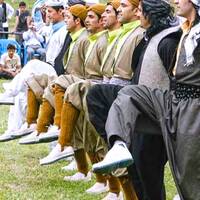
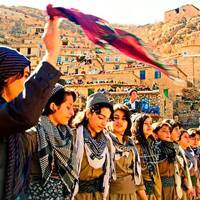
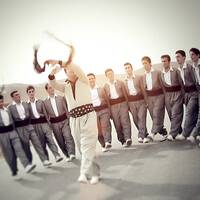
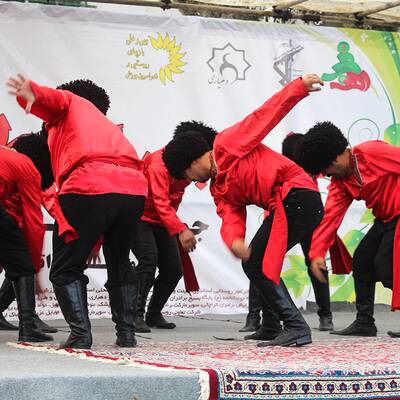
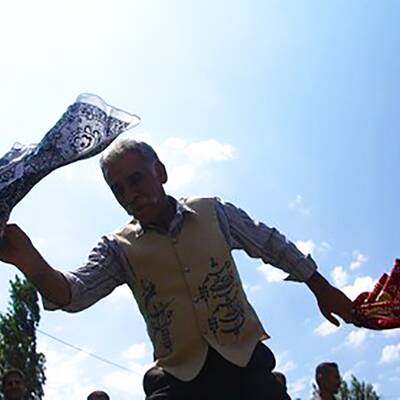
.jpg)